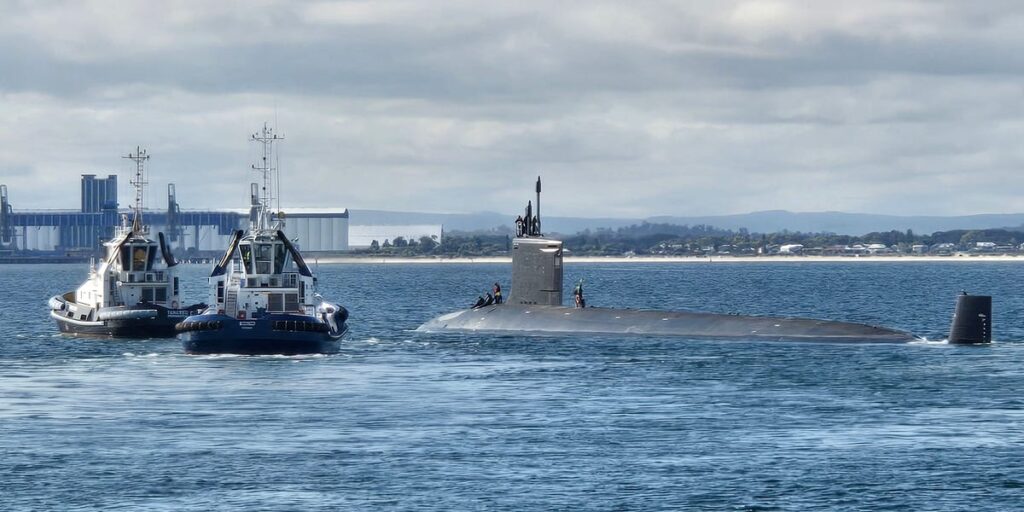The US Navy’s newest submarine program is expected to run $17 billion over its budget through the end of the decade as problems with once-smooth submarine construction deepen, a key House lawmaker said.
The news comes after a major report earlier this year revealed the Navy’s biggest projects, including new Virginia-class submarines, were facing severe delays of up to three years.
On Thursday, House Rep. Ken Calvert, chairman of the House defense appropriations subcommittee, said in remarks prior to an oversight meeting that the Navy had “withheld information on costs and delays” and that its “plans to address” its shipbuilding crises “are primarily aspirational.”
“In a word, these programs are in crisis,” the California Republican said. “Without exception, they are falling behind. Increasingly, they are over budget. Absent today’s intervention, I have zero confidence that Navy shipbuilding will get back on track.”
Calvert referenced a variety of the Navy’s top programs, including the Virginia-class fast attack submarine, which is manufactured by General Dynamics Corp. and Huntington Ingalls Industries.
Navy officials have attributed delays to “common issues from lingering COVID impacts across the national workforce and supply chain landscapes with industry reticent to invest.”
In his remarks, Calvert noted the Navy is struggling to construct just 1.3 of the vessels a year when its requirement is two, and the cost is expected to be $17 billion more than budgeted through 2030. It’s unclear what exactly is included in that figure and whether it could be higher.
It’s clear that the Navy and shipbuilders have known about this shortfall for at least 18 months,” Calvert added, “when Congress was notified just two weeks ago.”
The Congressional hearing was held as Navy Secretary Carlos Del Toro attempted to advocate for the Shipyard Accountability and Workforce Support proposal, which was shot down by the White House. The proposal sought to reallocate money set aside for future Virginia- and Columbia-class submarines to cover shipyards’ current inflation-related costs and worker pay issues, both of which the Navy and its industry partners have said are causing schedule delays and funding problems.
In regard to the SAWS proposal, HII CEO and President Christopher Kastner told Politico, “I credit Secretary Del Toro, the Navy, and DOD with a solution that is kind of genius: addresses the wage gap and invests in the industrial base without the need for funding above the Navy’s planned budget. It gets at the underlying current challenges in shipbuilding so we can get these ships built and delivered on schedule to support the Navy and AUKUS.”
In a statement after the Congressional hearing, the Navy said Del Toro “recognized the importance of submarine acquisitions amidst the challenges of fiscal constraints.”
The statement added that Del Toro “has been advocating for improvements to the maritime industrial base, and to increase funding to ensure the Navy meets its acquisition objectives.”
To alleviate its cost and manufacturing problems, the Navy added that it had created an independent cost agency to increase accuracy on program costs and was working to streamline ship design processes and improve shipyard facilities as it aims to grow its fleet to counter China.
Earlier this year, the Navy held a 45-day review that found multiple of its top programs had been delayed, resulting in increased costs. The longest delays were for the coming Block IV Virginia-class submarines and Constellation-class guided missile frigates, which, based on current performances, won’t be delivered for at least another 36 months.
The review was ordered by Del Toro back in January. At the time, Navy leadership expressed concern that delays facing the Virginia-class vessels could bleed into the development timeline for the new Columbia-class ballistic missile submarines, which are a top priority for the Pentagon. The delays facing the Columbia class could mean the Navy won’t meet its requirement of having 10 ballistic missile subs ready to deploy at all times.
Meanwhile, problems with the Navy’s delivery of Virginia-class subs may impair the US’ ability to fulfill its end of the AUKUS agreement.
Under AUKUS, the US Navy is expected to sell the first of as many as five Virginia-class submarines to Australia in order to give the Royal Australian Navy its first nuclear submarines.
In his remarks on Thursday, Calvert slammed the Navy for its lack of urgency on the issue. “Somehow, the Navy continues to assert that commitments to INDOPACOM and our AUKUS partners remain on track” despite Virginia-class delays, he said.
Virginia-class submarines are considered vital to the US’ role in deterring and, if necessary, fighting China. Its arsenal of torpedoes, land-attack missiles, and upcoming anti-ship Tomahawk cruise missiles make it a flexible strike capability for the US in a potential conflict with China.
Read the full article here
















